第40章 TENDRIL-BEARERS--(continued)(6)
As the discs soon adhere firmly to such smooth surfaces as planed or painted wood, or to the polished leaf of the ivy, this alone renders it probable that some cement is secreted, as has been asserted to be the case (quoted by Mohl, p.71) by Malpighi.I removed a number of discs formed during the previous year from a stuccoed wall, and left them during many hours, in warm water, diluted acetic acid and alcohol; but the attached grains of silex were not loosened.
Immersion in sulphuric ether for 24 hrs.loosened them much, but warmed essential oils (I tried oil of thyme and peppermint)completely released every particle of stone in the course of a few hours.This seems to prove that some resinous cement is secreted.
The quantity, however, must be small; for when a plant ascended a thinly whitewashed wall, the discs adhered firmly to the whitewash;but as the cement never penetrated the thin layer, they were easily withdrawn, together with little scales of the whitewash.It must not be supposed that the attachment is effected exclusively by the cement; for the cellular outgrowth completely envelopes every minute and irregular projection, and insinuates itself into every crevice.
A tendril which has not become attached to any body, does not contract spirally; and in course of a week or two shrinks into the finest thread, withers and drops off.An attached tendril, on the other hand, contracts spirally, and thus becomes highly elastic, so that when the main foot-stalk is pulled the strain is distributed equally between all the attached discs.For a few days after the attachment of the discs, the tendril remains weak and brittle, but it rapidly increases in thickness and acquires great strength.During the following winter it ceases to live, but adheres firmly in a dead state both to its own stem and to the surface of attachment.In the accompanying diagram (fig.11.) we see the difference between a tendril (B) some weeks after its attachment to a wall, with one (A)from the same plant fully grown but unattached.That the change in the nature of the tissues, as well as the spiral contraction, are consequent on the formation of the discs, is well shown by any lateral branches which have not become attached; for these in a week or two wither and drop off, in the same manner as does the whole tendril if unattached.The gain in strength and durability in a tendril after its attachment is something wonderful.There are tendrils now adhering to my house which are still strong, and have been exposed to the weather in a dead state for fourteen or fifteen years.One single lateral branchlet of a tendril, estimated to be at least ten years old, was still elastic and supported a weight of exactly two pounds.The whole tendril had five disc-bearing branches of equal thickness and apparently of equal strength; so that after having been exposed during ten years to the weather, it would probably have resisted a strain of ten pounds!
SAPINDACEAE.--Cardiospermum halicacabum.--In this family, as in the last, the tendrils are modified flower-peduncles.In the present plant the two lateral branches of the main flower-peduncle have been converted into a pair of tendrils, corresponding with the single "flower-tendril" of the common vine.The main peduncle is thin, stiff, and from 3 to 4.5 inches in length.Near the summit, above two little bracts, it divides into three branches.The middle one divides and re-divides, and bears the flowers; ultimately it grows half as long again as the two other modified branches.These latter are the tendrils; they are at first thicker and longer than the middle branch, but never become more than an inch in length.They taper to a point and are flattened, with the lower clasping surface destitute of hairs.At first they project straight up; but soon diverging, spontaneously curl downwards so as to become symmetrically and elegantly hooked, as represented in the diagram.They are now, whilst the flower-buds are still small, ready for action.
The two or three upper internodes, whilst young, steadily revolve;those on one plant made two circles, against the course of the sun, in 3 hrs.12 m.; in a second plant the same course was followed, and the two circles were completed in 3 hrs.41 m.; in a third plant, the internodes followed the sun and made two circles in 3 hrs.47 m.The average rate of these six revolutions was 1 hr.46 m.The stem shows no tendency to twine spirally round a support; but the allied tendril-bearing genus Paullinia is said (Mohl, p.4) to be a twiner.